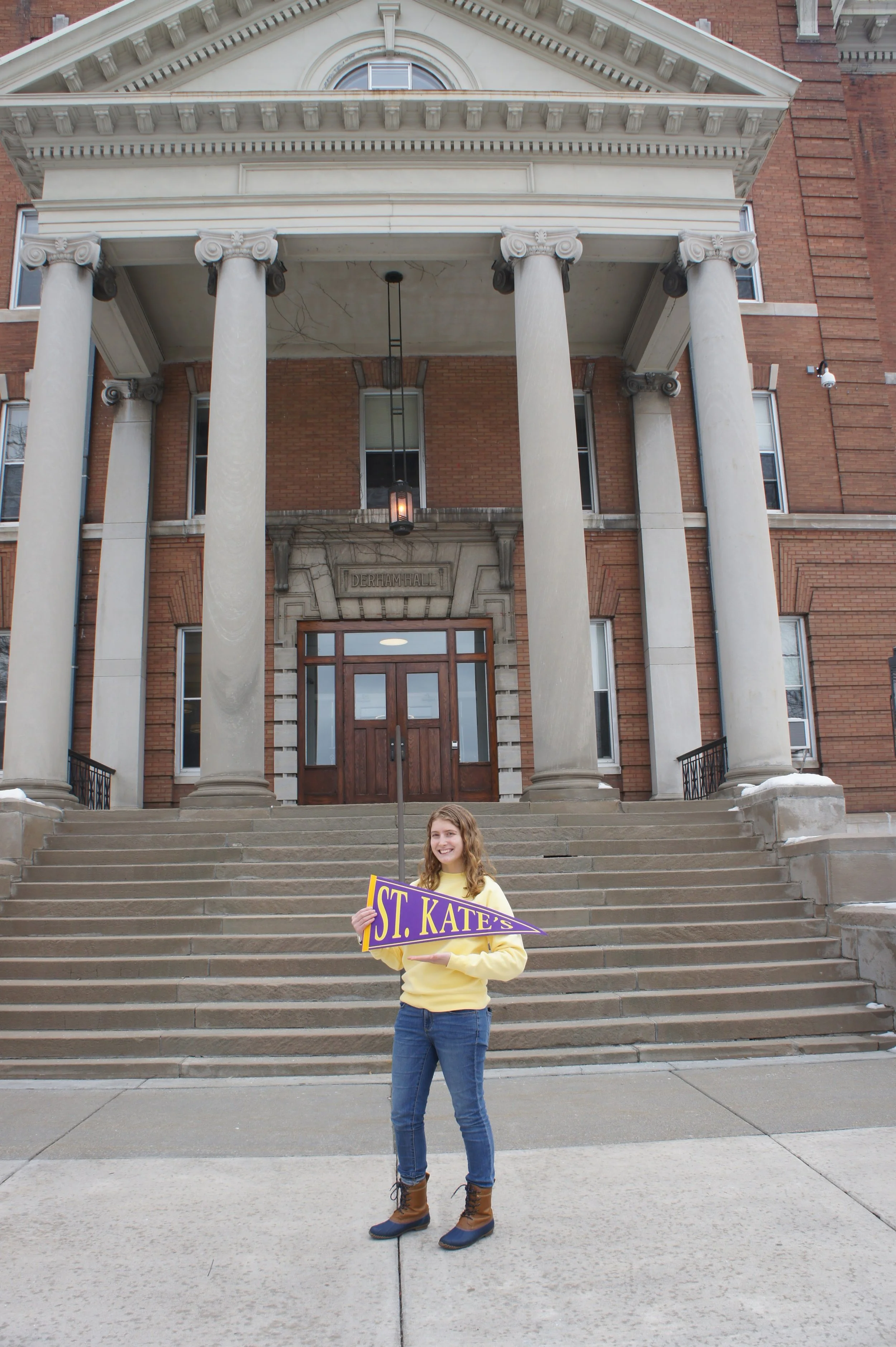Special Edition Fall 2021: Teaching and Education
How St. Catherine’s professors have evolved over time
“Education - how noble is the work, how sublime is its value! The word itself, to educate, tells the purpose of the task - to draw out, to bring into play the inborn possibilities of the soul, to build up the soul into the possession of the power and the beauty which the Creator made it capable. The work of education is the complement of the work of creation; the teacher is the co-laborer of Almighty God.”
- Archbishop Ireland
St. Catherine University was founded with the intent “to create the finest liberal arts and sciences institution of higher education for women in the Midwest,” says professor of history and women’s studies Jane Carroll. Developing learned women of the highest degree was a primordial intention of the university. The passion for a quality education led the college to employ professors who had a vast knowledge in their fields. How would women learn without someone to teach them? Professors were the individuals who directly executed the aspiration of a rightful education for women. As time has progressed, professors’ academic credentials and teaching styles have changed, though their practice of influencing students has not. The mission of the university can be seen atop St. Kate’s Mission and Vision webpage: “Our mission is to educate women to lead and influence;” and because of professors and their teaching, this ideal continues to be a daily reality.
The first educators at St. Catherine University were the Sisters of St. Joseph who began their teaching careers at St. Joseph Academy. St. Joseph Academy was one of many small educational settings in the Twin Cities in which a woman could achieve a higher education. Before St. Kate’s, St. Joseph’s was regarded as the highest level of women's education in the Saint Paul area.
Once the College of St. Catherine was established, the best educators from St. Josephs were selected to come and teach on campus. When the college opened in 1905, many of the Sisters who taught did not have advanced degrees. Mother Antonia wanted a highly regarded school and sent Sisters around the globe to achieve a high level of education during their time teaching; for some this was a Master of Arts, for others it was both a Bachelor of Arts and Master of Arts. The faculty’s education continued on through the 1930s until the college began to hire full time professors with Master of Arts degrees or PhDs. The purpose of higher education for faculty was to become as highly regarded as any male or co-ed institution so that female students could receive the finest education possible through professors.
Professor Jane Carroll shared with The Wheel three current roles a professor has at St. Kate’s: teaching and advising, producing scholarship, and serving the university's community. The education of students does not simply mean sharing information; it means engaging with students and drawing out the best qualities in them. In addition to this, professors are also expected to further their field of academia. This could be done through personal research and writing, or it could be done in conjunction with a student to further the education of both participants. Finally, a professor is expected to serve the university community. Serving on staff boards, research for the community, talking with prospective students: all and more are acceptable means of accomplishing this goal. Being a professor at St. Catherine University requires that one be a rounded individual, that one cares for others, and that one live out the university’s tenets that they teach to students.
When the college was founded, enrollment was limited, about one-hundred students total. Attendance started to grow in the 1910s-20s and by the 1930s class sizes resembled that of our own about 15-18 students per class, an overall ratio of 12:1, student:professor.
Most classes currently offered in the Humanities Department are discussion-based, but this was not always the case. When the women’s movement began in the 1970s, some discussion was had regarding the traditionally patriarchal teaching styles (lecture-based teaching), and some began to wonder… does teaching have to be this way? Feminist thinkers expanded on this thought process and discussion-based classes emerged in which students were allowed to share their voices. Students could now interact on a personal level with professors about what content they enjoyed and why.
“I love teaching what interests me, and I love being able to share my interests or enthusiasm with students in the classroom,” said Professor Carroll.
Discussion-based teaching allows for Carroll to engage with students, and opens the door for students to encounter passion for something new while engaging in cognizant conversation. This relatively new teaching style is the means through which modern-day professors communicate the venerable ideals of St. Catherine’s.
“We are very highly unusual,” said Carroll. Yes, we are. There may be colleges similar to St. Kate’s, but they are rare. It is not often that a student finds a college in which current professors embody and execute ideals articulated by radical nuns from the 1900s.






